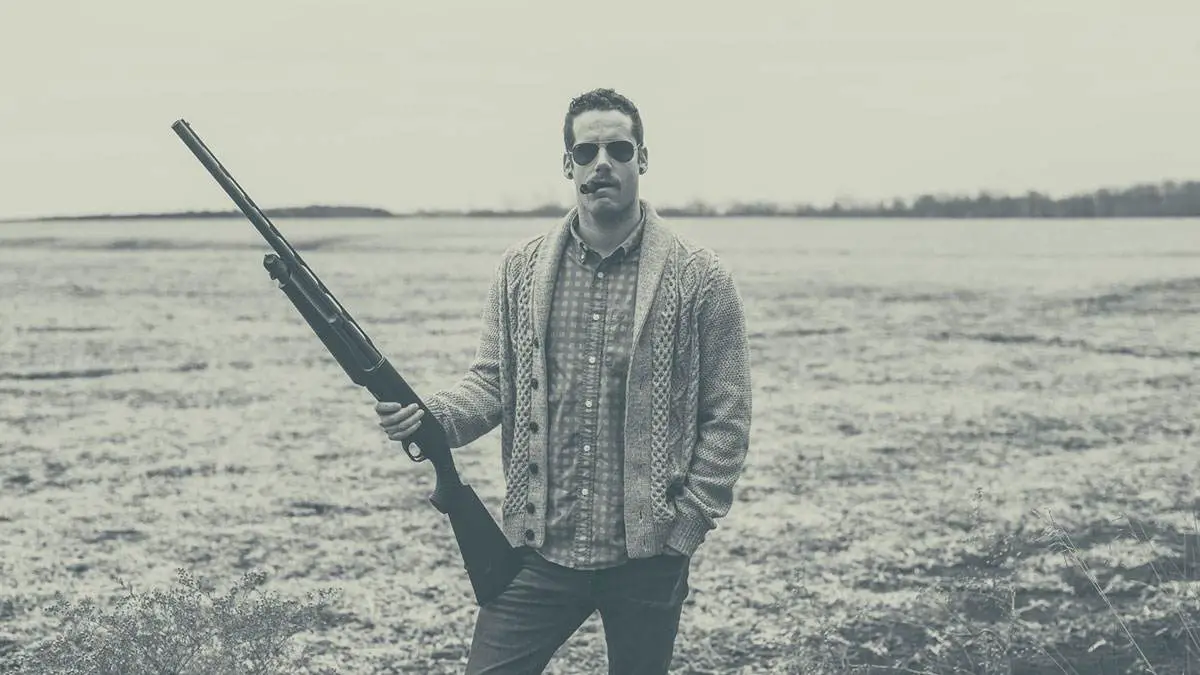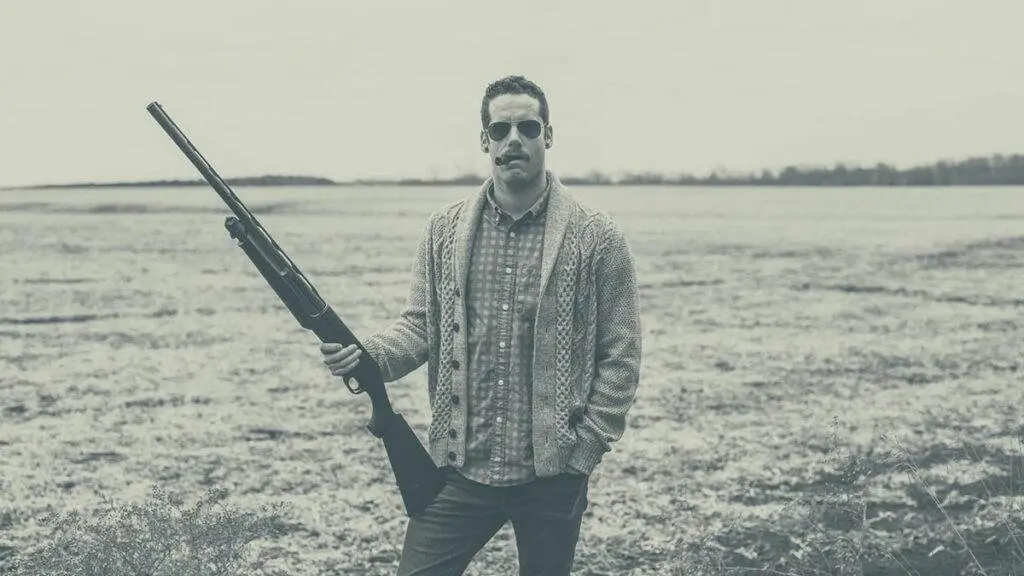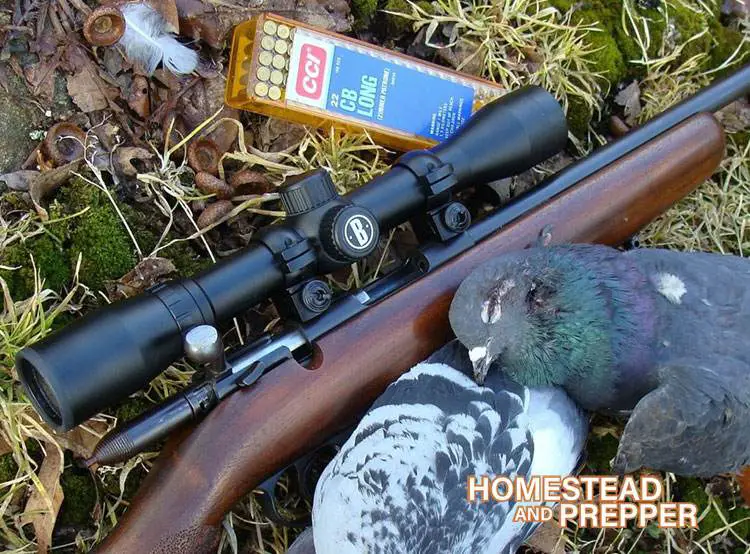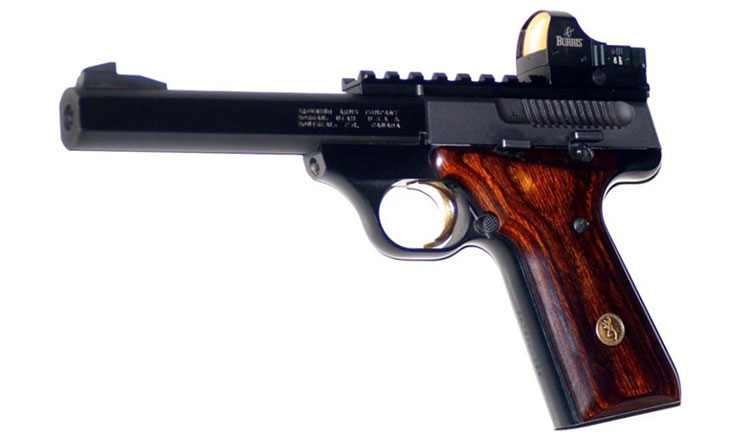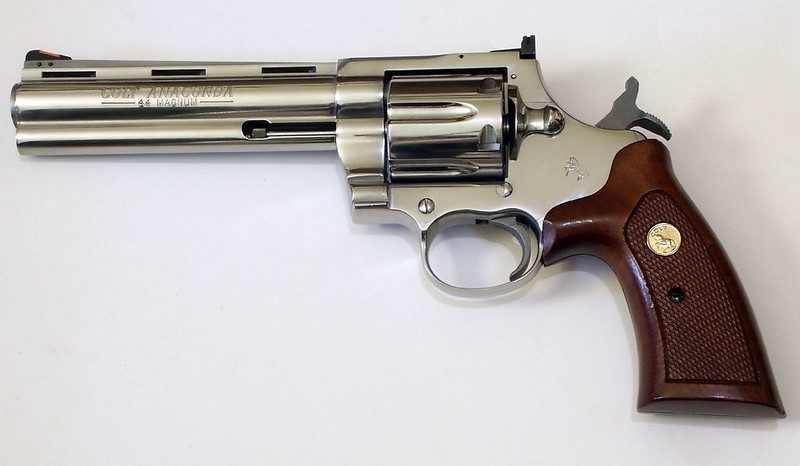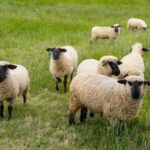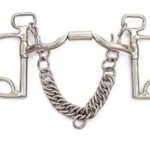Table of Contents
Have a farm or homestead? Looking for a gun to stock the larder or ward off pests and threats? Here is my list of the best guns for a homestead or farm and firearms for securing the ranch.
The westward migration prompted by the Homestead Act of 1862 saw families living beyond the bounds of established law and order.
Numerous threats were a real concern, whether two or four-legged types, so a dependable firearm joined the list of other crucial implements needed to carve out a new life.
Believe it or not, the “gun that won the west” wasn’t a Winchester Model ’73 rifle. There’s only so much room in a wagon, so, with space (as well as funds) at a premium, one do-all firearm made more sense, especially if it could handle everything from defense through prairie chickens.
The logical choice was a shotgun. That was often one with two barrels, which presented an imposing business end.
The same concept still has merit, especially given improvements to today’s ammunition offerings.
Repeating “pump guns” and semiautos provide greater capacity and many can be quickly transformed from bird or deer guns into highly effective defensive weapons. So, even today, if starting with just one firearm, a shotgun would be the ideal choice.
Here is my complete list of the best guns for a homestead or farm:
- 12 or 20 Gauge Pump Shotgun
- Beater Single-Shot Shotgun
- Repeating .22 Rimfire Rifle
- Beater .22 Rimfire Bolt-Action Rifle
- Centerfire High-Powered Rifle
- .22 Rimfire Handgun
- 9mm or .357 Magnum Handgun
- AR-15 .223/5.56 Carbine
- .22 Caliber Air Rifle
You can read about each of these in more detail below, but whatever your preference, consider the list a menu. Just pick and choose those that best fit your circumstances. After all, buying everything on the list would be really expensive.
That’s not counting accessories or one other precious commodity – bulk ammunition! One thing I’ve noticed, though: shotgun shells almost always seem to be available.
On to the list in more detail!
#1 – 12 or 20 Gauge Pump Shotgun
Got crows in the corn? Geese in the river? Squirrels, turkeys and deer in the oak grove? No worries, the right shotgun choice can cover everything that crawls, walks, or flies for a relatively minor investment. If I could only own one firearm, a 12 Ga. pump would be my hands-down choice.
Some prospective owners may worry about its kick, but today’s low-recoil shells can alleviate this concern, along with scaled-down 20 gauge “youth and ladies” offerings.
Unlike a semiauto, a manually-cycled slide-action (pump) will digest anything from the mildest 2 ¾-inch loads through 3-inch Magnums and slugs (lead bullets).
The majority of my experience involves the hugely popular Remington Model 870. You can buy a 12 gauge stainless steel version or a camouflaged 20 gauge version. There are many other choices, of course. The Mossberg line is another strong contender.
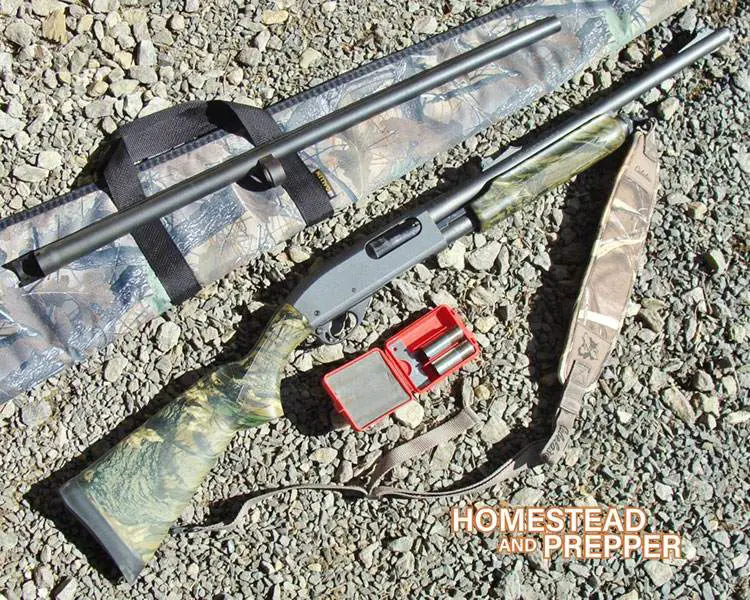
A 26—28″ bird barrel with interchangeable choke tubes will handle the feathered or furred game and pests.
Add a spare 21-inch rifle-sighted barrel, and you’ll have a 100-yard hog, deer, and bear gun that can also serve nicely for defense (forends are sold to mount lights).
#2 – Beater Single-Shot Shotgun
These basic guns have a long history of being one of the best guns for a homestead. They’re a simpler version of the double-barrel shotgun that helped win the Wild West. They offer a useful grab-and-go solution for any number of crop-raiding critters.
The beauty of a break-barrel is its simplicity, which also results in an affordable gun not the least bit fussy about its diet. Typically, activation of a lever or tab will cause the hinged barrel to tilt downward, exposing the breech for loading.

Most have exposed hammers and are sold with long tightly-choked barrels. Although less than ideal for wing-shooting or slugs, they work well enough to dissuade most pests.
A typical gauge can simplify logistics, but some folks minimize recoil and collateral damage by choosing the smallest .410-bore types.
#3 – Repeating .22 Rimfire Rifle
Here’s a firearm worth owning, especially if chambered to fire .22 Long Rifle (.22 LR) cartridges. Recoil is non-existent, and the report in a rifle is mild.
Ammunition is affordable and available in numerous types suitable for everything from small game to the perforation of pests or cans.
If you ask for a rifle recommendation, the odds are good it’ll be a semiautomatic Ruger 10/22; enormously popular for decades and is sold in many attractive models.
The simplicity of the 10/22 also makes it natural for customization. Aftermarket parts abound, and those with only minimal mechanical ability can assemble a unique rifle using just a few essential hand tools.
Ruger’s recent take-down versions are also useful picks that won’t break the bank. For what it’s worth, a .22 LR chamber will also accept some other interesting loads like much quieter .22 Shorts, etc. (see below).
The trouble is, they lack the oomph to cycle most semiautos, which are also tricky to hand-feed. So, for some, a non-fussy bolt-action .22 could be the better choice — or you could pick up an inexpensive spare…
#4 – Beater .22 Bolt-Action Rifle
Consider this one an auxiliary critter-control pick for those with irritating homestead pest problems like rats in a barn or garden-raiding rodents.
A simple .22 LR bolt-action can digest numerous useful cartridges including CCI’s aptly named .22 LR “Quiets”, even quieter .22 CB Caps, or .22 LR rat-shot loads.
The latter’s minuscule payload restricts range to just a few steps, but the tiny shot pellets minimize collateral damage.
Many farms or rural homes have a well-used single-shot leaning in a corner for rapid deployment.
Just open the bolt, toss your choice cartridge, and take care of business. I’d scope a mainstay rifle, but this one could work well as is.
Rimfire caution: The above .22 rounds can’t be safely fired in a .22 Magnum (.22 WMR) chamber. Although the latter is much more potent, it’s less versatile, and ammunition is more costly.
#5 – Centerfire High-Powered Rifle
By their nature, many homesteaders and other rural folks are resourceful. Gardens, agricultural crops, and livestock are common, but many won’t pass up an opportunity for venison.
If a freezer-perfect deer appears 150 yards from the bedroom window, you’ll need something with more reach than the shotgun. A scoped rifle in a well-proven caliber like .308, .30-06, or .270, etc. is just the ticket.

But, what kind? Well, the Ruger American picture above works fine, as do a number of new and fairly affordable synthetic-stocked bolt-actions from Savage, Ruger, and others, some of which also have detachable magazines.
They’re simple and reliable picks that typically shoot exceptionally well, leaving extra money for a decent scope (some even come with one).
#6 – .22 Rimfire Handgun
A handgun’s harder to shoot than a rifle, so extra practice helps, but centerfire cartridges are expensive and loud. Hence, the .22 LR choice can also serve as a helpful companion during chores or aboard a tractor.
The three common options are either a single-action revolver, double-action type, or semiautomatic pistol. To gain the practice element, look for one similar to a centerfire handgun choice.
Nowadays, because the latter is typically some type of high-capacity pistol, a semiauto could make sense. If so, fairly affordable single-action types include Browning’s Buckmarks, the Rugers, and S&W Victory series. And recently, to match the centerfire striker-fired types, equivalent rimfires have appeared from Glock, Ruger, S&W, etc.
Actually, in rural settings, a revolver could be more useful. My son has a heck of a problem with mice in a storage shed.
He’s shot as many as he’s trapped using a small D/A S&W J-frame revolver and .22 rat shot (loaded in the first three chambers). It’s also a great D/A match for a highly versatile .357 Magnum, which has plenty of punch for most large threats.

The downside to quality D/A revolvers like those from S&W is their cost. So, some opt for extremely affordable S/A .22 LRs sold by Heritage and Ruger. A spare .22 WMR (Magnum) cylinder is a further possibility.
One kicker: The S/As don’t match up as well with common defensive centerfire semiauto or D/A revolver handguns.
#7 – 9mm or .357 Magnum Handgun
If something goes bump in the night, a handgun can be reassuring. For that matter, so could the shotgun. But, a “handgun” is more maneuverable and can free up at least one. It’ll also carry much more discreetly, which is a big reason it also tops my list of the best guns for bugging out.
Today’s popular choice is some type of hi-cap (or mid-cap) polymer semiauto pistol in the ubiquitous 9mm from Glock, Sig, Springfield Armory, S&W, etc. Buy one with a light rail if you can.
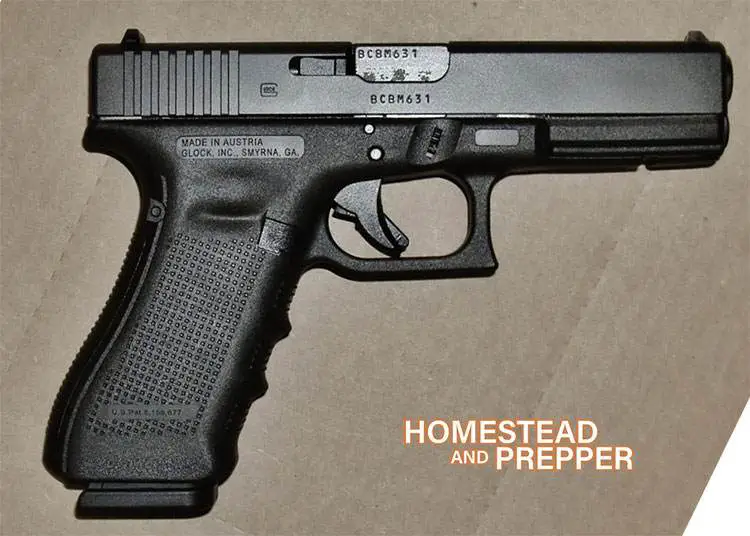
I also wouldn’t rule out a good D/A revolver! Especially one chambered for the highly versatile .357 Magnum, which will also fire milder but still useful .38 Specials. The swing-out cylinder provides easy operation and will digest nearly any load.
Among several good brands, S&W’s mid-sized K-frame stainless Model 66 is a good example of a handy revolver that can handle everything from rabbits to deer and all human threats, via numerous excellent loads. You can even screw on laser grips.
#8 – AR-15 .223/5.56 Carbine
“America’s Rifle” appears here out of deference to the many who would otherwise decry its absence. Makes some sense, too.
An obvious role is a defense, especially in areas removed from timely 911 responses (or, recently, some cities). Homesteaders, during a collapse situation, could quickly become targets if food supplies ran low.
Homesteaders outfitted with several 30-round magazines should be suitably armed to repel unwelcome boarders, as well as cougars, coyotes, or other varmints.
A number of excellent .223 loads will work for hunting, and some will supposedly anchor feral hogs. However, I’d rather switch to a larger caliber for whitetail deer (absolutely necessary for elk, etc.).
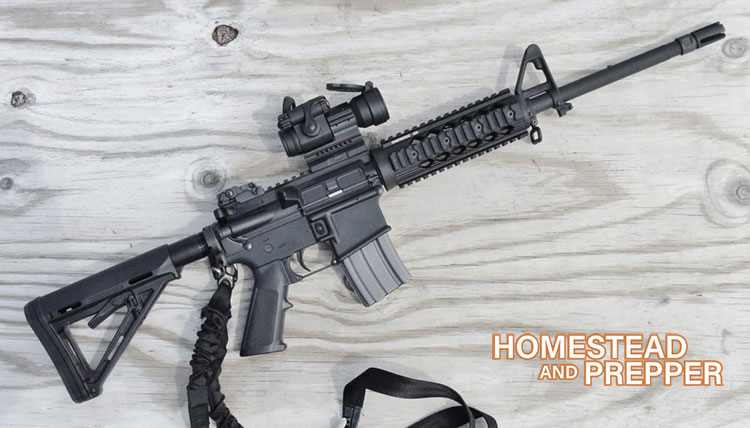
Another useful defense-through-deer option is the .300 Blackout. This small .30-caliber cartridge works well in AR-15s, either as a complete carbine or spare upper.
A 16-inch version will carry well, stow in small spaces, and generate minimal recoil. A railed forend will accommodate a light or laser.
#9 – .22 Caliber Air Rifle
Offering more punch than the basic BB gun, many quiet pellet-firing types are employed to eliminate feeder-raiding squirrels from kitchen windows. Some also have enough power to harvest small game without alerting other animals or neighbors.
Regarding squirrels, I’d rather not fire .22 LR bullets skyward. The safer solution is a barrel-cocking or pre-charged .22-caliber air rifle capable of developing 800 fps with a 16-grain pellet.

Indiscriminate shooting is never permissible, but at least the maximum carrying range for most such airguns will be closer to a shotgun. You can also set up a makeshift indoor range with fewer concerns about overpenetration or lead toxicity.
So far, despite panic-driven ammo shortages, pellets have remained available for little cost. No FFL is required, either. Airgun Depot is a place to find more pellet rifles than you can imagine. My airguns and pellets arrived by mail.
Security Concerns
Many homesteaders will have kids and fewer nearby watchful neighbors, making unauthorized access to their firearms a concern. A good gun safe may not stop a determined thief, but it’s a whole lot better than a closet.
Considering the possible list of rural intruders (two or four-legged), a rapid-access type is worthwhile.
Some, like the newer Hornady Rapid Safes, will open through a swipe of an RFID label or bracelet. An additional small unit is a good choice for a handgun, offering kid-proof reassurance for any unusual nighttime disturbances.
Best Guns for a Homestead or Farm Summary
Again, the above is just a menu. There are numerous other great choices. Speaking for myself, if I had enough discipline to implement more rational thought, I’d go with just five guns.
Three would be Remington pump-action long guns: a 12 Ga. M-870, a .22 LR M-572 (which will fire everything through CB Caps), and a .308 M-760. The other two would be S&W stainless revolvers chambered for .22 LR and a .357 Magnum.
Viola, all bases are covered via basic but dependable firearms that function similarly, using commonly available cartridges. But what fun would just five be?
Let me know your thoughts in the comments section.

